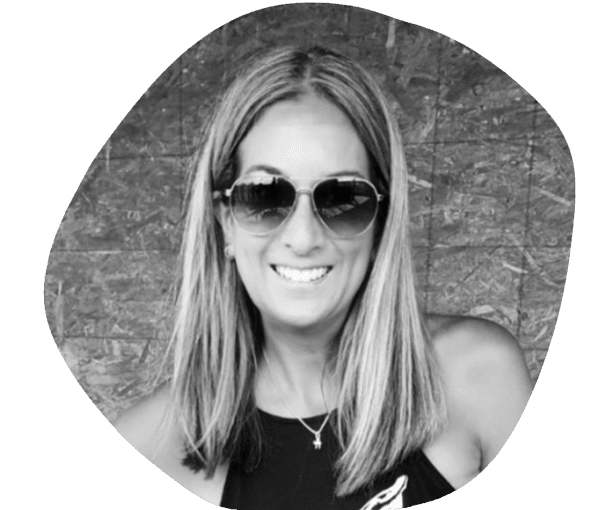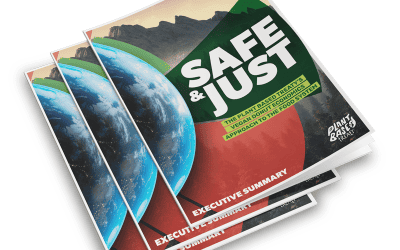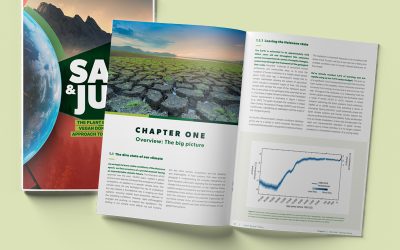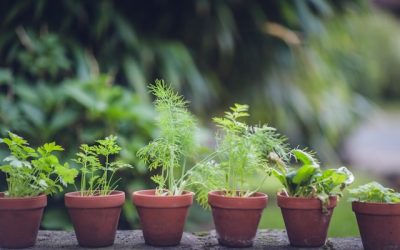Blog
An ocean dead zone is an area of the ocean with extremely low oxygen levels making it uninhabitable and causing entire ecosystems to die off. Most marine life cannot survive in an ocean dead zone and the area is comparable to a very hot desert with little biodiversity. Although ocean dead zones can sometimes form naturally, most of them are caused by the effects of climate change and agricultural practices. These include the factory farming of live animals such as pigs, cows, and chickens; and pollution from commercial fertilizers and pesticides used to produce food for these animals, in addition to food for humans. Excess nutrients leaving factory farms into waterways in the form of animal waste leads to the overgrowth of algae and then forms algal blooms that contain dangerous levels of toxins. Ocean dead zones are expected to increase in both size and number as climate change intensifies.

“Less oxygen dissolved in the water is often referred to as a “dead zone” because most marine life either dies, or, if they are mobile such as fish, leave the area. Habitats that would normally be teeming with life become, essentially, biological deserts.” – National Ocean Service
The second biggest dead zone in the world is in the US, specifically the Northern Gulf of Mexico, however no part of the world is exempt from ocean dead zones occurring in coastal waters.
The process leading to ocean dead zones is called eutrophication. Eutrophication “occurs when the environment becomes enriched with nutrients, increasing the amount of plant and algae growth…. Eutrophication sets off a chain reaction in the ecosystem, starting with an overabundance of algae and plants. The excess algae and plant matter eventually decompose, producing large amounts of carbon dioxide.” – National Ocean Service
National Ocean Service further explains, “There are many physical, chemical, and biological factors that combine to create dead zones, but nutrient pollution is the primary cause of those zones created by humans.”

The number of animals killed annually for food is shocking. Check out Animal Clock to see the numbers go up and up in real time. “The United States Department of Agriculture reports that 9.76 billion land animals were slaughtered in 2020.” – Animal Clock
Meanwhile in Canada, “the Canadian meat industry slaughtered more than 825 million land animals for food in 2021, according to government slaughter statistics analyzed by Animal Justice.” – Animal Justice
That is a lot of animal waste entering our precious waterways! This is in addition to all the fertilizer used to grow crops such as corn and soy that these farmed animals must eat to sustain themselves until they are killed, and the next group of animals arrives. It’s a vicious cycle.

The Guardian reported: “Toxins from manure and fertiliser pouring into waterways are exacerbating huge, harmful algal blooms that create oxygen-deprived stretches of the gulf, the Great Lakes and Chesapeake Bay…”
They continue to explain; “Nutrients flowing into streams, rivers and the ocean from agriculture and wastewater stimulate an overgrowth of algae, which then decomposes. This results in hypoxia, or lack of oxygen, in the water, causing marine life either to flee or to die.” – The Guardian
Animals on factory farms emit toxic levels of methane gas, CO2, and excrement that are a major contributor to climate change, global warming, water shortages, pollution, greenhouse gas emissions, and deforestation. And now we know the process of raising and then killing animals for food is also largely responsible for ocean dead zones.
Mighty Earth reported in 2018 that ocean dead zones have expanded 1000% worldwide since 1950 and referenced a scientific study titled, Declining oxygen in the global ocean and coastal waters.
“The study points to climate change and expanding meat production as primary drivers of these low-oxygen areas, and echoes findings from Mighty Earth’s recent investigation into the specific companies most responsible for the largest dead zone on record in the Gulf of Mexico last year.” – Mighty Earth
So is there any good news? Well actually, yes. Some ocean dead zones can be slowed down while others can recover over time depending on what caused them. In a document about Ocean deoxygenation by the International Union for Conservation of Nature (IUCN) they state the following;
“To reverse the loss of oxygen, people, industry and governments must urgently cut carbon dioxide emissions and reduce ocean nutrient pollution. Warming-driven deoxygenation cannot easily be reversed but it can be slowed considerably by mitigating greenhouse gas emissions.” – IUCN
What can we do to prevent more ocean dead zones? In addition to buying foods grown with less fertilizer or even growing our own food if possible, it’s crucial we eliminate our consumption of meat, fish, dairy and eggs. Following a plant-based diet is the best thing you can do for the planet, not to mention your health and the lives of animals. By taking direct action on food systems and not supporting animal agriculture we can help reverse the damage that has been done to our earth and prevent future ocean dead zones from happening. A vegan diet is safe for all stages of life and the Plant Based Treaty has a Vegan Action Starter Guide to help you make the transition. Get friends and family to join you on this amazing journey and challenge each other to make a real difference for our planet.

Miriam Porter is an award-winning writer who writes about veganism, social justice issues, and eco-travel. Miriam currently lives in Toronto with her son Noah and many rescued furry friends. She is a passionate animal rights activist and speaks up for those whose voices cannot be heard.
More from the blog
6 More Important Calls To Action From The Safe And Just Report – Part Two
By Miriam Porter
6 Important Calls To Action From The Safe And Just Report – Part One
By Miriam Porter
Grow Your Own Kale And Spinach For Healthy Green Smoothies
By Miriam Porter



